The UK government, on 3 December 2014, announced a radical overhaul of the Stamp Duty Land Tax (SDLT or Stamp Duty) system in its Autumn Statement. It comes into force on 4 December 2014. In Scotland, it will then be replaced by LBTT (Land and Buildings Transaction Tax) for Scottish property transactions completing after 1 April 2015. So, in Scotland, we now have an interim system that will last for about 4 months before it is replaced. LBTT looked like being financially beneficial for most Scottish property buyers compared to ‘Old Stamp Duty’. However, this ‘New Stamp Duty’ is even more financially beneficial to property buyers than LBTT is going to be…
So, what are the timings of Old Stamp Duty being replaced by New Stamp Duty and then LBTT? What are the differences in cost to a property buyer in Scotland? And what effect will this have on you if you are thinking of buying or selling a property in Scotland in the coming months? However, first, an executive summary for those too busy to read the full article…
Exec Summary – How Does ‘New Stamp Duty’ and LBTT Affect You?
1. As of midnight on 3 December 2014, property buyers in the UK stand to save a considerable amount of money in the Stamp Duty they pay on residential property purchases. The bandings and taxation amounts applying to property purchases will change significantly, with a ‘progressive’ system of taxation rather than the existing ‘slab’ tax.
2. The new Stamp Duty regime will continue to apply in England and Wales next year but, in Scotland, will be replaced by Land and Buildings Transaction Tax (LBTT) for property purchases that ‘complete’ or ‘settle’ on or after 1 April 2015.
3. Scottish buyers, depending on the value of the property, stand to lose a considerable amount of money for property sales that ‘complete’ or ‘settle’ on or after 1 April 2015 versus a similar transaction in England and Wales or versus a similar transaction in Scotland that settles between 4 December 2014 and 31 March 2015.
4. As examples…The average price of a 3-bed detached house in Edinburgh in 2014 is £319,131 (as of December 2014 according to ESPC statistics). From 4 December 2014, someone buying a house at this price would pay £5,957 in Stamp Duty but, under proposed LBTT rates, they would pay £9,213. This is an additional payment of £3,256. The average selling price of a four bedroom house in Edinburgh, in 2014, has been £395,110 (as of December 2014 according to ESPC statistics). That would be Stamp Duty of £9,756 as of 4 December 2014 but £16,811 under proposed LBTT as of 1 April 2015: a difference of £7,056.
5. The tipping point is £254,000: above that point, buyers stand to save money with the ‘New Stamp Duty’ regime versus the LBTT regime that comes into effect for properties with a completion date on or after 1 April 2015. This saving to the buyer increases significantly as the property value increases. A buyer of a £500,000 property in Scotland will pay £12,300 more in LBTT on 1 April 2015 than in Stamp Duty on 31 March 2015.
6. These changes will create a huge amount of urgency for many property buyers in Scotland who are currently looking for a property: good news for sellers. This isn’t great news for buyers seeking to save tax on their purchase because this is a time of year when people traditionally don’t put properties on the market in such great numbers.
7. Sellers should consider putting their property on the market sooner rather than later. This is particularly so if their property falls into a price bracket where their buyer stands to save a significant amount of money under the new Stamp Duty regime versus the new LBTT regime. There is a real chance that this change will cause a surge of activity in the Scottish residential property market.
8. As a vocal opponent of Stamp Duty, an inequitable ‘slab’ tax, I am delighted that the UK government has announced that Stamp Duty will be changed to a more progressive tax. I am delighted that the distortion of property prices around certain price points will be removed. The new regime replaces a disproportionately punitive tax that has for years been levied on property purchasers. For the vast majority of property buyers, both ‘New Stamp Duty’ and LBTT will leave them with more money in their pockets.
9. The change will affect Scotland more negatively than the rest of the UK. Scottish property buyers will face a higher tax burden than their English counterparts from 1 April 2015. It is a shame that the Scottish property market will have to adapt to one system only for it to change less than 4 months later but more of a shame that Scotland will get to taste a tax break for a few months and then have it removed.
Timelines of the Property Purchase Taxes – Is Your Purchase Affected?
There is a table of examples a little bit later in this piece, so that you can see the differences between the tax payable under the various regimes, based on different purchase prices. First, however, when do these tax regimes come into force?
The Current Regime (‘Old Stamp Duty’) – Up to 3 December 2014
The Scottish Government has already announced that it is replacing Stamp Duty Land Tax (SDLT) with Land and Buildings Transaction Tax (LBTT) for properties with a completion date on or after 1 April 2015. We have already reported in detail on that change.
http://www.mov8realestate.com/2015/01/changes-lbtt-rates-april/
The New Regime (‘New Stamp Duty’) – From 4 December 2014 to 31 March 2015
Until the changeover date of 1 April 2015 when LBTT comes into force for property purchases, control of Stamp Duty (SDLT) will remain with the Government in Westminster.
George Osborne, the Chancellor of the Exchequer, announced on 3 December 2014, in his Autumn Statement, that there will be an almost-immediate change to the SDLT rates and thresholds. That change takes effect for properties settling on or after 4 December 2014: in other words, the day after it was announced!
The New, New Regime (Land and Buildings Transaction Tax, ‘LBTT’) – From 1 April 2015
LBTT comes into force on 1 April 2015. Any property purchase in Scotland with a settlement date on or after 1 April 2015 will be subject to LBTT instead of this ’New Stamp Duty’.
In England and Wales, on the other hand, they will continue to operate with the existing ‘New Stamp Duty’ regime. In other words, it will only actually be in force in Scotland for less than 4 months.
What if you’ve already concluded missives on a purchase but not yet completed?
If your settlement date is on or after 4 December 2014, you will pay Stamp Duty (SDLT) at the new rates.
There is an exception though…
If you have concluded missives on your purchase prior to 4 December 2014 but the settlement date is on or after 4 December 2014, you can choose which regime you want to pay tax under: the old one or the new one. In reality, it will almost certainly be the new one that you choose! See the figures below…
What Will it Cost Me? New Stamp Duty vs Old Stamp Duty vs LBTT
‘Old Stamp Duty’
As a reminder of what has been, Stamp Duty applied to purchases of, amongst other things, residential property. For property purchases completing up to and including 3 December 2014, the following rates apply. If you concluded missives up to and including 3 December, but the completion date is on or after 4 December 2014, you can choose whether you want to be taxed on this basis.
The rates are based on the purchase price and are:
- 0% up to £125,000;
- 1% from £125,001 to £250,000;
- 3% from £250,001 to £500,000;
- 4% from £500,001 to £1,000,000;
- 5% from £1,000,000 to £2,000,000;
- 7% from £2,000,001 upwards.
You pay SDLT on the whole amount of the purchase. In other words, if you buy a property that costs £249,999 you will pay 1% of the whole amount. If you purchase a property that costs £250,001, just £2 more, you will pay 3% of the whole amount in tax to the government. That means that you pay almost £5,000 more in tax to the government for a property that costs just £2 more!
‘New Stamp Duty’
The new rates and thresholds have adopted similar principles to LBTT, which was already scheduled to come into force in Scotland on 1 April 2015. The old SDLT (Stamp Duty) ‘slab tax’ structure has been replaced with a progressive tax, one where only the portion of the purchase price above or between the various thresholds is charged at the increased rate.
It’s worth noting that the thresholds and tax levels adopted by the Westminster Government are different to those that have been announced for LBTT. It’s also worth noting that, although the rates and thresholds for LBTT were announced, they were yet to be formally adopted by the Scottish Parliament at the time of the ‘New Stamp Duty’ announcement on 3 December 2014, although the Scottish Government was strong in its statement, in reaction to the Stamp Duty announcement, that they feel the thresholds and rates can be different because of the differences in house prices between the two markets: http://news.scotland.gov.uk/News/DFM-statement-on-stamp-duty-12e9.aspx.
The headline rates are easily misunderstood and some of the headlines in newspapers have already been quite frightening, with political commentators calling this a ‘Mansion Tax’. The rates are as follows:
- Up to £125,000 the rate is 0%
- Over £125,000 to £250,000 – the rate is 2%
- Over £250,000 to £925,000 the rate is 5%
- Over £925,000 to £1.5 million the rate is 10%
- Over £1.5 million the rate is 12%
For a property purchase of £275,000, with settlement date of 5 January 2015, the Stamp Duty payable will be calculated as follows:
- 0% on the first £125,000 = £0
- 2% on the next £125,000 = £2,500 (£250k – £125k = £125k)
- 5% on the final £25,000 = £1,250 (£275k – £250k = £25k)
- Total SDLT payable = £3,750
LBTT versus New Stamp Duty
- Up to £135,000 the rate is 0%
- From £135,000 to £250,000, the rate is 2%
- From £250,000 to £1,000,000 the rate is 10%
- From £1,000,000 upwards, the rate is 12%
So, on a property purchase of £275,000, with settlement date of 5 January 2015, the LBTT payable will be calculated as follows:
- 0% on the first £135,000 = £0
- 2% on the next £115,000 = £2,300 (£250k – £135k = £115k)
- 10% on the final £25,000 = £2,500 (£275k – £250k = £25k)
- Total LBTT payable = £4,800
Examples – Old Stamp Duty vs New Stamp Duty vs LBTT
Below is a range of example purchase prices, showing the SDLT (Stamp Duty) that would be payable for settlements up to and including 3 December 2014 and from 4 December 2014 onwards, plus examples of what the LBTT payable on that purchase will be for a settlement on or after 1 April 2015, assuming you are in Scotland.
| Purchase Price (£) | Old SDLT (£) | New SDLT (£) | LBTT (£) |
| 120,000 | 0 | 0 | 0 |
| 130,000 | 1300 | 100 | 0 |
| 140,000 | 1400 | 300 | 100 |
| 150,000 | 1500 | 500 | 300 |
| 200,000 | 2000 | 1500 | 1300 |
| 240,000 | 2400 | 2300 | 2100 |
| 260,000 | 7800 | 3000 | 3300 |
| 300,000 | 9000 | 5000 | 7300 |
| 350,000 | 10500 | 7500 | 12300 |
| 400,000 | 12000 | 10000 | 17300 |
| 450,000 | 13500 | 12500 | 22300 |
| 500,000 | 15000 | 15000 | 27300 |
| 750,000 | 30000 | 27500 | 52300 |
| 1,000,000 | 40000 | 43750 | 77300 |
| 2,000,000 | 100000 | 153750 | 197300 |
Are You Better-Off Under the ‘New Stamp Duty’ or LBTT?
If you live in England and Wales
If you live in England or Wales, the answer to this one is pretty straightforward. This is a tax cut. So for all but the most expensive properties in the UK you will be better-off. The government’s stated figures are that about 98% of property buyers will be better-off under ‘New Stamp Duty’ versus ‘Old Stamp Duty’.
If you are purchasing a property under £125,000, you already didn’t have to pay Stamp Duty so there is no difference for you. For everything else, you will be saving money, up to £937,500, where you will pay more under ‘New Stamp Duty’ than ‘Old Stamp Duty’.
If you live in Scotland
If you live in Scotland, the answer is more complicated and is a bit of ‘yes’ and a bit of ‘no’.
Yes, almost unreservedly until 1 April 2015…
For almost four months, if your property purchase happens to complete after 3 December 2014 and before 1 April 2015, you are better-off under the ‘New Stamp Duty’ regime than you were under the ‘Old Stamp Duty’ regime. Unless…
You are buying a property over £937,500, in which case the tax is actually higher under the new regime than the old Stamp Duty regime. Hence why some critics have dubbed it a mansion tax.
You are buying a property under £125,000, in which case you didn’t have to pay Stamp Duty before and you don’t have to pay Stamp Duty now.
No, almost unreservedly from 1 April 2015 onwards…
For completions on or after 1 April 2015, when LBTT replaces ‘New Stamp Duty’ the situation is different.
If you are buying a property up to £125,000, there will be no difference: the Stamp Duty rate is 0%. So you’re no better or worse off.
If you are buying a property between £125,000 and £135,000, you will be a bit better-off: in England and Wales, as in Scotland prior to 1 April 2015, you will be paying tax from £125,000, whereas in Scotland from 1 April 2015 you will still pay 0% between £125,000 and £135,000. Therefore, at £128,000, you would save £60. At £135,000 you would get the maximum saving of £200.
Once you are between £135,000 and £250,000, you are always, consistently £200 better-off under the Scottish LBTT system than the ‘New Stamp Duty’ regime in place until 1 April 2015: the rates of tax are the same, but in Scotland from 1 April 2015 you will only be paying it from £135,000 to £250,000 whereas under ‘New Stamp Duty’ you are paying it on £125,000 to £250,000. So, at £240,000 your tax under ‘New Stamp Duty’ is £2,300. Under LBTT it is £2,100. Given that property prices are rising, it is arguably not worth waiting for a few months in order to save that amount of money.
Things get a bit more interesting over £250,000, and not in a good way if you are a buyer. The rate for the portion of the purchase price between £250,000 and £1,000,000 under LBTT is 10%. The rate for the portion of the purchase price between £250,000 and £925,000 under ‘New Stamp Duty’ is 5%. And that fairly racks-up the further you get from £250,000. By example:
- £300,000 purchase – you pay £2,300 more under LBTT than ‘New Stamp Duty’
- £500,000 purchase – you pay £12,300 more under LBTT than ‘New Stamp Duty’
- £750,000 purchase – you pay £24,800 more under LBTT than ‘New Stamp Duty’
The tipping point is £254,000: once you go past that point, you pay more under LBTT than under New Stamp Duty.
In short, if you are purchasing a property over £254,000, you are saving money by settling prior to 1 April 2015. At £300,000, it’s already a £2,300 saving, rising to £24,800 for a £750,000 property. So you will almost certainly want to see the completion date being 30 March 2015 rather than 2 April 2015, if it’s at all possible.
On and around 30 March 2015, Scottish conveyancing solicitors will be having palpitations. The chance of a last-minute snag, a real possibility in the Scottish conveyancing process, delaying settlement from slightly before to slightly after the 1 April 2015 change-over date from Stamp Duty to LBTT is significant.
Buyers should do everything in their power to have absolutely everything in order at their end. That includes having all mortgage and finance paperwork, including proof of source of funds, absolutely to hand and sent over to solicitors in record time. One of the main reasons that purchases are delayed is delays in lenders providing the purchasing solicitor with paperwork regarding the mortgage. A professional, independent mortgage adviser can assist hugely with this process and speed it up, and anyone thinking of settling around this time to save a significant amount of tax would do well to speak to a professional mortgage adviser rather than trying to shop-around themselves for their mortgage.
For the seller, the chance of the sale falling-through if the buyer can’t secure a settlement date that’s suitable is also significant. Sellers should therefore read all paperwork sent to them by their solicitors, very carefully, and make sure that all paperwork or issues that could hold-up the sale, such as permissions and completion certificates for alterations, confirmation of the estate or inhibitions due to unpaid Council Tax are provided to the solicitor as early in the process as possible.
Conclusion – Is This All a Step Forward?
Depending on who you are, yes and no. But, mainly, if you’re Scottish, no.
The introduction of ‘New Stamp Duty’ and then LBTT is certainly a step forward from the ridiculous, slab tax SDLT system that it replaces. This previous system distorted property prices around the £125,000, £250,000 and £500,000 tax bracket thresholds. On top of that, 95% of people buying a property in Scotland should, at the time of the introduction of LBTT on 1 April 2015, pay less tax than they would under the old Stamp Duty regime. So, for 95% of property purchasers, it’s good news. For the remaining 5% purchasing more expensive properties, it’s not.
It is of course infuriating, as someone living and working in Scotland, to think that, were I one of the lucky few who can purchase a £500,000 or a £750,000 home, I would stand to pay £12,300 or £24,800 less in Stamp Duty, respectively, to the UK government than I will pay in LBTT to the Scottish government: in other words, near the border, I could in theory cross the road and buy an identical property yet pay significantly less tax to the government. For all the free healthcare subscriptions in the world, that’s not going to make me feel great about paying my taxes to the Scottish rather than UK government. So it’s hard not to think that this might have had something to do with the timing of this move by the UK government, on the eve of a general election. Maybe I’m too cynical for my age…
The UK government’s approach with ‘New Stamp Duty’ is that it is a tax cut, a gift to the electorate, whereas the Scottish government’s approach to reforming Stamp Duty, by contrast, was fiscally neutral: whereas the UK government is saving home buyers money but having to find that money elsewhere, from what I understand the Scottish government’s redistributive policy won’t drive-up taxes or spending cuts elsewhere. Nevertheless, having shown their hand first and introduced what, at the time, seemed like a hugely progressive tax reform for Scottish property buyers, the Scottish government must be fuming that it now looks less attractive than its English counterpart.
It’s also a bitter pill to swallow if, like me, you live and work in Scotland and know that the UK government has introduced this tax cut in the full knowledge that it will be given with one hand and then taken back with the other hand less than four months after its introduction north of the border. Of course, that’s what comes with having devolved powers and some would argue that tuition fees and prescriptions similarly are freebies that are populist measures designed to secure votes and that they also can’t benefit from those. And they would of course have a point too! However, when you see a neighbour paying tens of thousands of pounds less in tax on a purchase, simply because they live one mile away from you, it’s not going to be hugely palatable. In a way it would have been better never to have it than to have it and then have it taken away!

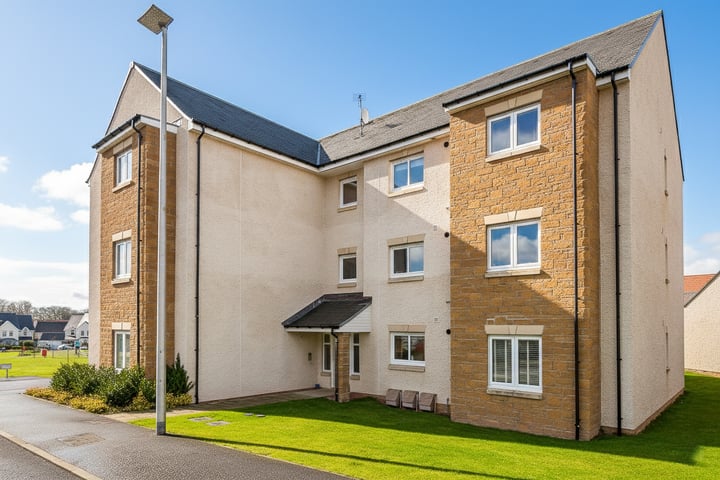
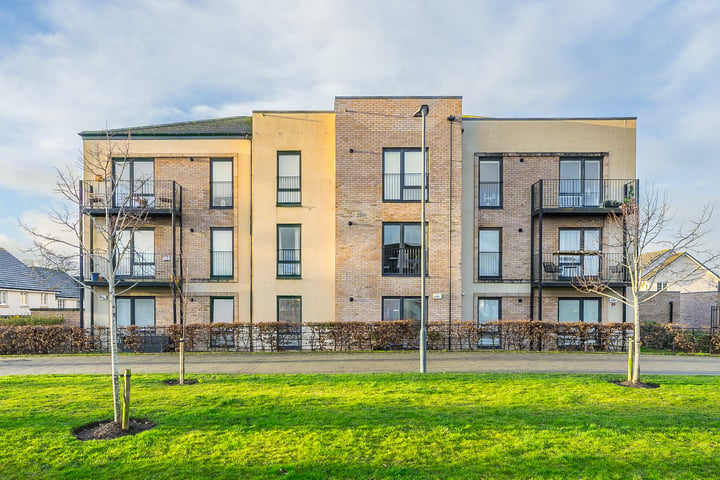
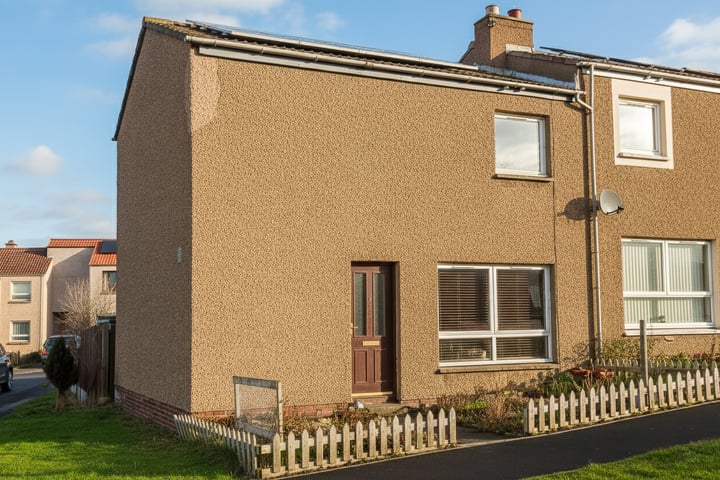
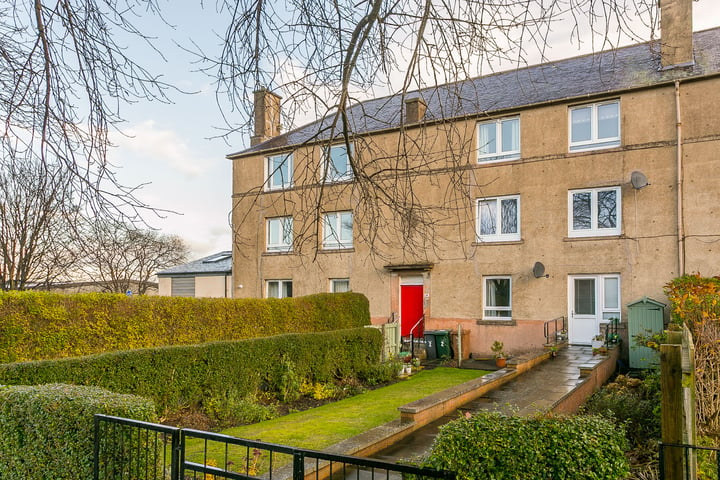

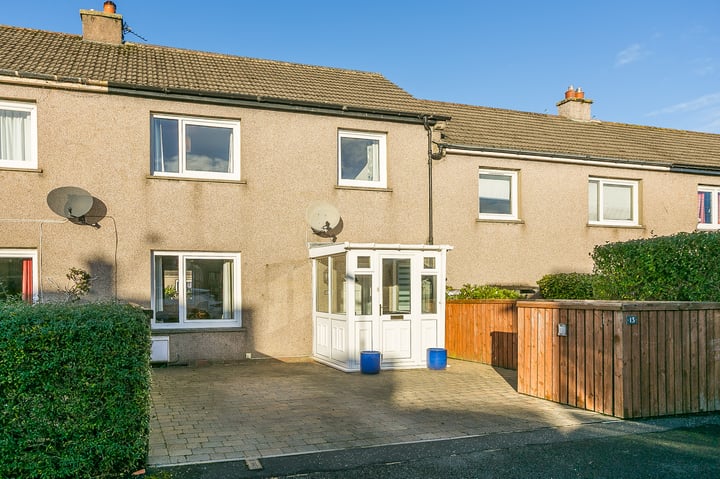
Leave a Reply